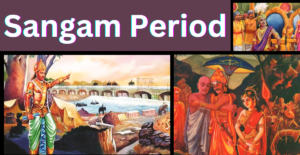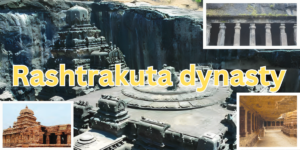Science,Architecture,Literature and Music in mughal empire
Science,Architecture,Literature and Music in mughal empire
Learn about : The Administration of the Mughal Empire
Learn about : Mughal Rulers
Mughal Science and Technology:
Astronomy:
Humayun established a separate observatory near Delhi. Later the rulers showed interest in creating observation stations .Mughal observation stations combined Islamic and Hindu influences.Islamic instruments were mixed with Hindu computational techniques in the 17th
Chemistry:
Sheikh Dean Muhammad learned Mughal chemical techniques.Especially in the preparation of spicy and soaps for shampoo.Zach Dean Muhammad, a noted writer, gave detailed descriptions of Mughal emperor Shah Alam II and cities like Allahabad and Delhi.
Metallurgy:
A remarkable astronomical instrument discovered in Mughal India was an unobstructed, concave, celestial globe by means of lost wax casting.Ali Kashmiri ibn Luqman discovered this globe in Kashmir at 998 AH (1589-90 CE). Many more were produced in Lahore and Kashmir during the Mughal Empire.The reinvention of these globes challenged the belief that it was technically impossible to produce hollow metal balls.The 17th-century celestial globe was designed in Lahore by Diyat ad-Din Muhammad in 1668 and is now housed in the National Museum of Scotland.
Mughal Religion:
The 16th and 17th centuries were marked by the rise of Vaishnavism, with Tulsidas promoting Rama worship through devotional songs and portraying Rama as an incarnation of God.The Bhakti movement gained momentum during this period, with poets and theologians criticizing rituals and the caste Krishna consciousness gained popularity, and the movement spread through the use of local languages.
Vallabhacharya and Vithalnath propagated Krishna worship .Surdas wrote literature depicting Krishna consciousness in the local language.Kabir, a weaver, emerged as a prominent figure who denounced idolatry and the caste system and advocated the idea of a complete God.
Sikhism:
Sikhism began as a movement asserting the idea of one God and evolved into a recognized world religion. Guru Nanak, the founder, condemned idolatry, rituals and the caste system and believed in a formless and omnipresent God.The Guru Granth Sahib contains the teachings of Islamic religious figures and Bhakti scholars like Kabir, Sain and Ravidas.
Sufism:
Sufism, which originated in Iran, found fertile soil in India. Acceptable as long as Shariah-imposed restrictions are adhered to.Sufism established an intuitive divine connection with Islam.
Christianity:
With the arrival of European traders, Christian missionaries like Francis Xavier and Robert-de-Nobili came to India.The early Christian missionaries were primarily Catholic. The first Lutheran missionaries came to Tranquebar in 1706 under Danish patronage.Ziegenbalg, one of the missionaries, translated the Bible into Tamil in 1714.
Mughal Architecture:
Mughal buildings are known for their grand designs.They have domes, ornate lighthouse-like towers, stupas at the four corners, and painted and studded.Some structures incorporate modern elements such as tombs in high fortifications and surrounding water tanks.Impressive buildings like the tombs of Sher Shah and Islam Shah at Purnakila in Delhi and Saram in Bihar.The influence of Mughal architecture extends beyond its own era.This can be seen in later Indian styles such as the Indo-Saracenic architecture of the British Raj, as well as Rajput and Sikh styles.Even today, these majestic structures inspire architects and artists from all over the world.
- Agra Fort:
- Built by Akbar between 1565 and 1574, this magnificent fort showcases the influence of Rajput architecture.
- Fatehpur Sikri:
- Akbar’s short-lived capital, built between 1569 and 1574, houses architectural wonders such as the Buland Darwaza, one of the tallest gateways in India.
- Humayun’s Tomb:
- This exquisite garden mausoleum in Delhi, erected by Empress Begum in 1569-70, is considered the inspiration of the Taj Mahal.
- Taj Mahal:
- Shah Jahan’s masterpiece, built at Agra between 1630 and 1649, is a monument of love and testimony to the pinnacle of Mughal architectural achievement.
- Wazir Khan Mosque:
- This mosque in Lahore was built between 1634 and 1642, known for its intricate tile work and vibrant colours.
- Shalimar Gardens:
- Built in Lahore in 1641-1642, the UNESCO World Heritage Gardens are a masterpiece of landscape design.
- Badshahi Mosque:
- Built between 1671 and 1673 in Lahore, the mosque was once the largest in the world and is a magnificent example of Mughal architectural grandeur.
Literature in the Mughal Empire:
- Persian prose and poetry flourished during Akbar’s
- Abdul Fazl, a renowned scholar and historian at Akbar’s court, set a high standard for prose writing.
- Faizi, a leading poet, worked in the field of translation and supervised the completion of the translation of the Mahabharata.
- Notable Persian poets who migrated from Iran, Utbi and Nasiri, played a significant role in transforming the Mughal court into a cultural centre.
- Love stories, especially those related to Krishna and Radha, were written in lyrical poems and translated into regional languages such as Bengali, Oriya, Hindi , Rajasthani and Gujarati.
- Malik Muhammad Jaisi‘s “Padmaavat” explores Sufi ideas and Hindu ideas about Maya using Alauddin Khalji’s attack on Chittor as a metaphor.
- The Mughal emperors and Hindu rulers patronized medieval Hindi in the form of Brij spoken in the Agra region.
- Abdur Rahim Khan-i-Khanan mixed devotional poetry with Persian ideas, which influenced the exchange between Persian and Hindi literary traditions.
- Tulsidas , a noted Hindi poet, centered on Lord Rama and advocated family ideals and Ram bhakti as the path to salvation for all, irrespective of caste.
- Tulsidas proposed a modified caste system based on personal qualities rather than birth.
- Abdul Rahim Khan wrote “Baburnama” (translation of Tuzuk I Babari) in Persian.
- Abdul Fazl wrote “Akbarnama” (History of Akbar) and “Ain-i-Akbari” (Administrative Book).
- Jahangir wrote his autobiography “Tuzuk-i-Jahangiri”.
- Mutamit Khan wrote a biography of Jahangir, “Iqbalnama-i-Jahangir.”
- Shah Jahan’s biography, “Patanama”, was written by Abdul Hamid Lahori and Inayat Khan.
Music in the Mughal Empire:
The Mughal emperors, especially Akbar, were ardent patrons of music.Music was a collective discipline in which Hindus and Muslims actively participated.Akbar, in particular, was a great connoisseur of music and a great musician.Ain-i-Akbari, written by Abdul-Fazl ibn Mubarak, mentions that there were 36 high-ranking musicians at Akbar’s court.Tansen, also known as Mian Tansen, holds an important position and is considered one of India’s finest musicians.
Tansen is credited with inventing many new ragas and exhibiting his musical innovations.Legend has it that with his music he possesses extraordinary abilities such as the power to stop the flow of the Yamuna.Baba Ram Das and Baba Hari Das were well-known musicians who received a significant reward from the former Bairam Khan.Sur Das, the son of the famous singer Ram Das, was also a court musician during Akbar’s reign.Akbar’s interest and patronage in music led to advancements in both instrumental and vocal art.The Mughals created two distinct musical systems – Hindu and Muslim – and are credited with contributing to the birth of national Indian music.
Learn about : The Administration of the Mughal Empire
Learn about : Mughal Rulers




